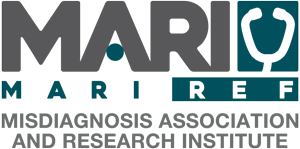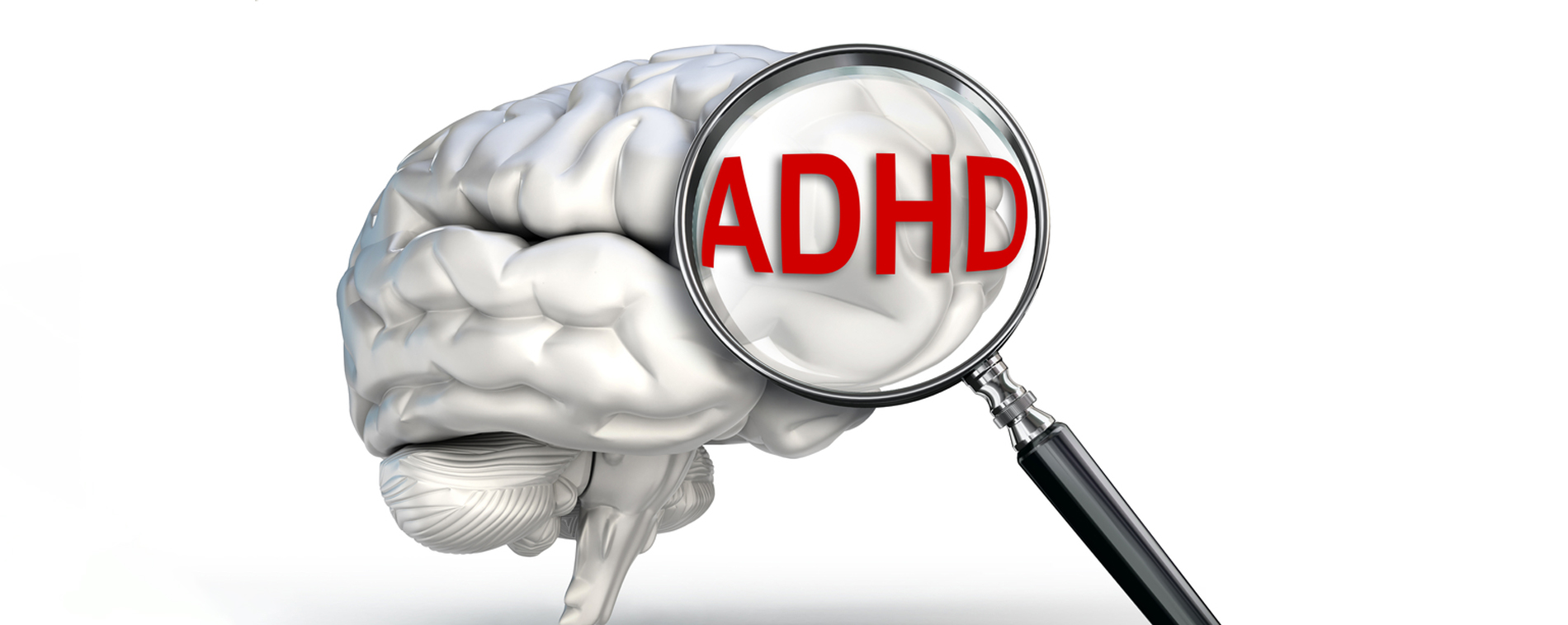Overview (ADHD)
Attention-deficit hyperactivity disorder (ADHD) is a neuro-developmental disorder typically associated with children. It is described as an impairment in functioning caused by inattention, impulsiveness and hyperactivity (Holland and Sayal, 2018). In the adult population, it impacts social interactions, work productivity and academic achievement, displaying how the disorder has a significant influence on various areas of a patient’s life (Xue et al., 2019). ADHD is also known to be associated with other conditions such as oppositional defiant disorder, mood disorders, anxiety disorders, substance abuse, conduct disorder and tic disorders (Austerman, 2015).
Social Media Summary
Attention-deficit hyperactivity disorder (ADHD) is a neuro-developmental disorder typically associated with children.Many of these children may have difficulties sitting still, waiting their turn,being fidgety, and acting impulsively. Treatment of ADHD usually encompasses a combination of therapy and medication intervention which in some cases includes behavioral strategies in the form of parent management training and school intervention. Treatment for many children often alternate between various medication options depending on the efficacy and tolerability of the medication. The ultimate treatment goal is to improve symptoms to restore functioning at home and at school.
Social media handle Instagram: abidemi_oseni
Epidemiology of ADHD
Studies suggest that ADHD impacts about 5% of school-age children (Holland and Sayley, 2018). In the United States, more than 1 in 10 school-age children meet the criteria for the diagnosis of ADHD followed by 1 in 5 for high school boys and 1 in 11 for high school-aged girls (Manos et al., 2017). The estimated prevalence of ADHD in the adult population is 2.5% (Xue et al., 2019). Despite research in the past stating that most children with ADHD recover in adulthood, recent research has concluded that symptoms of ADHD continue into adulthood for two-thirds of cases (Zue et al., 2019). In addition, prescription and diagnosis rates vary between countries. For instance, prescribing rates in Denmark are 0.9% whereas, in Canada and Iceland, the percentage is between 4.6-4.7% (Holland and Sayal, 2018).
Etiology of ADHD
Despite ADHD being considered highly heritable, the genes that contribute to the phenotypic expression of ADHD have been hard to discover (Sciberras et al., 2017). Research has found a number of possible genes having an impact in predicting ADHD in patients such as SNAP25 and SLC6A4. While genome-wide association studies have started to be conducted, nothing significant has been published. While not all the risk for ADHD is genetic, there is also environmental risk due to heritability, a factor of gene and environment interaction (Sciberras et al., 2017). In fact, about 10 to 40% of the variability of ADHD is recorded to be because of environmental factors. Because ADHD appears early in life, most research has been conducted on the role the prenatal environment may have on the development of the disorder (Sciberras et al., 2017).
You might like to read about the Misdiagnosis Association MARI Research Institution.
Developmental Risk Factors for ADHD include (Austerman, 2015):
- Prematurity
- Prenatal complications
- An anoxic (oxygen deprivation) event
- Nutritional deficits (such as iron and zinc)
- Lack of proper socialization
- Heritability
Symptoms of ADHD
Holland and Sayal (2018) describe that those with ADHD have three core symptoms: hyperactivity, impulsiveness and inattention, causing impairment in functioning (Holland and Sayal, 2018). According to the DSM-5, symptoms vary but typically include numerous factors for diagnosis that can be found in the next section (American Psychiatric Association, 2013.
Symptoms of inattention linked to ADHD include that the patient (American Psychiatric Association, 2013:
- Is easily distracted
- Loses things essential for tasks and activities
- Forgetful in daily activities
- Avoids, dislikes or is reluctant to participate in tasks that require mental effort over a prolonged period of time.
- Has problems organizing tasks and activities
- Does not follow through on instructions and fails to complete schoolwork, chores, or duties in the workplace
- Does not appear to listen when directly spoken to
- Has issues holding attention on play activities or tasks
- Makes careless mistakes and fails to pay close attention to details of activities
Symptoms of hyperactivity and impulsivity linked to ADHD include that the patient (American Psychiatric Association, 2013):
- Often runs around or climbs in circumstances where it is not appropriate (in older people this is tied to feeling restless)
- Talks excessively
- Blurts out an answer before a question has been completed
- Fidgets with or taps hands or feet, or squirms in seat
- Leaves seat in situations when remaining seated is expected
- Is unable to play or take part in leisure activities quietly
- Interrupts or intrudes on others often
- Issues waiting their turn
- Is often “on the go”
Pathological Diagnosis
ADHD is associated with cognitive and functional deficits linked to abnormalities in the brain (Magnus et al., 2022). For instance, patients that have ADHD typically have smaller anterior cingulate gyrus and dorsolateral prefrontal cortexes (parts of the brain). These changes are thought to account for goal-directed behavior issues (Magnus et al., 2022). In addition, using fMRI, activity in the frontostriatal region is reduced as well. However, ADHD is known to be a clinical diagnosis. There are no standard laboratory or imaging results among patients with ADHD (Magnus et al., 2022).
Clinical Diagnosis
Diagnosis of ADHD in children includes proof of inattention, hyperactivity or impulsivity or both with a severity that impacts functioning for development in two or more settings being present before the age of 12 and it cannot be linked to another health disorder like trauma, anxiety or depression (Manos et al., 2017). Behaviors of ADHD had to have been present for six months before being diagnosed. Diagnostic requirements vary within themselves (American Psychiatric Association, 2013).
The following conditions must be met for a diagnosis of ADHD (American Psychiatric Association, 2013):
- That multiple inattentive or hyperactive-impulsive symptoms were present in individuals before the age of 12.
- That multiple symptoms are present in two or more settings.
- That there is proof of evidence that the symptoms of the patient interfere with, or reduce the quality of work, school or social functioning.
- That the symptoms presented are not explained by another mental disorder, for instance, anxiety, dissociative, mood, or personality disorder. That the symptoms do not happen only during the episode of schizophrenia or another psychotic disorder.
- To be diagnosed with ADHD linked to inattention, six or more symptoms of inattention must be present in kids up to the age of 16, or five or more for 17+ children and adults.
- To be diagnosed with ADHD linked to hyperactivity-impulsivity, six or more symptoms of hyperactivity-impulsivity must be present in kids aged 16 and below or five or more for children 17+ and adults. For both, symptoms must have been present for at least 6 months.
There are three types of presentations of ADHD based on symptoms (American Psychiatric Association, 2013):
- Combined Presentation: if a specific amount of symptoms within both criteria of inattention and hyperactivity-impulsivity have been present for six months.
- Predominantly Inattentive Presentation: If enough symptoms of inattention but not hyperactivity-impulsivity were present for six months prior to diagnosis.
- Predominantly Hyperactive-Impulsive Presentation: if enough symptoms of hyperactivity-impulsivity but not inattention were present for six months prior to diagnosis.
For older adults, symptoms of ADHD might appear differently compared to children. For instance, hyperactivity in kids may be displayed as extreme restlessness or a tendency to wear other people out with their activity for adults (American Psychiatric Association, 2013).
Treatment of ADHD
Pharmacological Treatment
Pharmacological therapy is the main view of treatment for those who have ADHD. It is divided into stimulants and non-stimulants (Magnus et al., 2022).
Stimulants are either amphetamines or methylphenidates (Magnus et al., 2022). Both of these stimulates are involved in blocking the neurotransmitter, dopamine in reuptake. Stimulants are considered to be the main form of treatment for ADHD. They are effective in 70% of patients. And there are multiple categories for the subtypes of stimulants such as immediate-release, sustained release, long-acting or extended-release. The side effects of stimulants involve changes in blood pressure, sleep, risk of dependency, and decreased appetite (Magnus et al., 2022).
Drug therapies have their limitations, for instance, high dropout rates and adverse effects (Xue et al., 2019). Some patients may show partial or no responses to the treatment they are given as well. A number of studies over the past twenty years have researched non-pharmacologic interventions for those with ADHD, using cognitive and behavioral methods concerning symptoms (Xue et al., 2019).
Concerning non-stimulant options, there are two types for ADHD
antidepressants and alpha agnosis (Magnus et al., 2022). In the former category, atomoxetine is known to be used and is an inhibitor of the neurotransmitter, norepinephrine. It is not nearly as effective as stimulants but it is still known to be a good option. It is usually used in kids who can’t tolerate stimulants or have anxiety. Other antidepressants that can be used are bupropion and TCAs, which are considered last choice options. Alpha agnostics like guanfacine and clonidine can be effective for ADHD treatment. But they have multiple impacts such as lowering blood pressure, causing sedation, dizziness, weight gain and more. They are typically better for children than adults (Magnus et al., 2022).
Non-Pharmacological Treatment
Another treatment for ADHD is psychosocial treatment (Magnus et al., 2022). This includes psycho-education for the family and patient and involves cognitive-behavioral training programs designed specifically for the patient to obtain long and short-term goals. With pharmacotherapy, these training programs have been proven effective (Magnus et al., 2022).
Misdiagnosis of ADHD
Manos, M. J., Giuliano, K., & Geyer, E. (2017). ADHD: Overdiagnosed and overtreated, or misdiagnosed and mistreated? Cleveland Clinic Journal of Medicine, 84(11), 873–880. https://doi.org/10.3949/ccjm.84a.15051
Magnus, W., Nazir, S., Anilkumar, A. C., & Shaban, K. (2022). Attention Deficit Hyperactivity Disorder. In StatPearls. StatPearls Publishing. http://www.ncbi.nlm.nih.gov/books/NBK441838/
References:
- American Psychiatric Association. (2013). Diagnostic and statistical manual of mental disorders (5th ed.).
- Austerman, J. (2015). ADHD and behavioral disorders: Assessment, management, and an update from DSM-5. Cleveland Clinic Journal of Medicine, 82(11 suppl 1), S2–S7. https://doi.org/10.3949/ccjm.82.s1.01
- Holland, J., & Sayal, K. (2019). Relative age and ADHD symptoms, diagnosis and medication: A systematic review. European Child & Adolescent Psychiatry, 28(11), 1417–1429. https://doi.org/10.1007/s00787-018-1229-6
- Magnus, W., Nazir, S., Anilkumar, A. C., & Shaban, K. (2022). Attention Deficit Hyperactivity Disorder. In StatPearls. StatPearls Publishing. http://www.ncbi.nlm.nih.gov/books/NBK441838/
- Manos, M. J., Giuliano, K., & Geyer, E. (2017). ADHD: Overdiagnosed and overtreated, or misdiagnosed and mistreated? Cleveland Clinic Journal of Medicine, 84(11), 873–880. https://doi.org/10.3949/ccjm.84a.15051
- Sciberras, E., Mulraney, M., Silva, D., & Coghill, D. (2017). Prenatal Risk Factors and the Etiology of ADHD-Review of Existing Evidence. Current Psychiatry Reports, 19(1), 1. https://doi.org/10.1007/s11920-017-0753-2
- Xue, J., Zhang, Y., & Huang, Y. (2019). A meta-analytic investigation of the impact of mindfulness-based interventions on ADHD symptoms. Medicine, 98(23), e15957. https://doi.org/10.1097/MD.0000000000015957
- Pliszka S; AACAP Work Group on Quality Issues. Practice parameter for the assessment and treatment of children and adolescents with attention-deficit/hyperactivity disorder. J Am Acad Child Adolesc Psychiatry. 2007 Jul;46(7):894-921.



